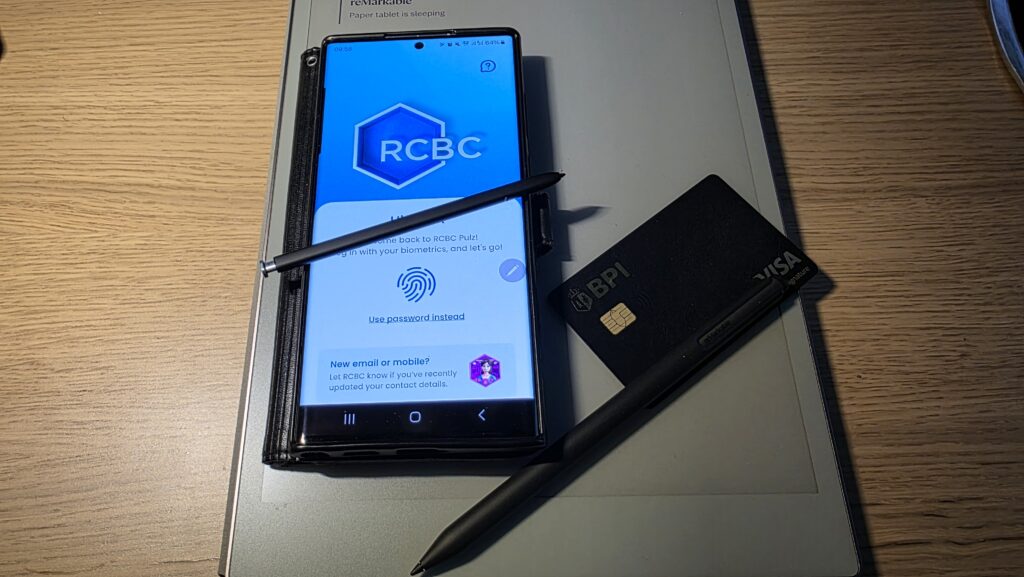Hey there, tech enthusiasts and curious minds! Lex Reyes here, your friendly neighborhood Tech writer from the bustling streets of Manila. Today, we’re diving headfirst into the world of cryptocurrencies – a topic that’s been buzzing louder than a jeepney horn during rush hour. So, grab your favorite barako coffee, settle into your most comfortable spot, and let’s unravel the mysteries of digital currencies together.
The Birth of a Digital Revolution
Remember the days when we thought mobile banking was the peak of financial innovation? Well, hold onto your hats, because cryptocurrencies have changed the game entirely. But before we get into the nitty-gritty, let’s take a step back and understand where it all began.
The Genesis Block
In the wake of the 2008 financial crisis, when trust in traditional banking systems was at an all-time low, a mysterious figure (or group) under the pseudonym Satoshi Nakamoto introduced Bitcoin to the world. This wasn’t just another digital payment system; it was a rebellion against centralized control of money. Bitcoin promised a decentralized future where financial power would be redistributed to the people.
The concept was revolutionary: a digital currency that wasn’t controlled by any government or financial institution. Instead, it relied on a technology called blockchain – a distributed ledger that records all transactions across a network of computers. This technology ensured transparency, security, and immutability of transactions, addressing many of the issues plaguing traditional financial systems.
As Bitcoin gained traction, it sparked a wave of innovation. Developers and entrepreneurs worldwide saw the potential of blockchain technology and began creating their own cryptocurrencies. This led to the diverse ecosystem of digital currencies we see today, each with its own unique features and use cases.
Crypto 101: Breaking Down the Basics
Now that we’ve covered the origin story, let’s break down some key concepts. Don’t worry if you feel like you’re drowning in a sea of tech jargon – I promise to keep things as simple as Jollibee’s menu (but way more exciting!).
What Exactly is a Cryptocurrency?
At its core, a cryptocurrency is a digital or virtual currency that uses cryptography for security. Unlike traditional currencies issued by central banks, cryptocurrencies operate on decentralized systems based on blockchain technology. This means that transactions are verified and records are maintained by a network of computers rather than a single central authority.
Key Features of Cryptocurrencies:
- Decentralization: No central authority controls the currency.
- Transparency: All transactions are recorded on a public ledger.
- Immutability: Once recorded, transactions cannot be altered.
- Pseudonymity: Users can maintain a degree of anonymity.
- Global Accessibility: Can be used across borders without traditional banking restrictions.
Types of Cryptocurrencies
While Bitcoin might be the poster child of cryptocurrencies, it’s far from the only player in the game. Let’s take a look at some of the major categories:
| Type | Description | Examples |
|---|---|---|
| Coins | Cryptocurrencies with their own blockchain | Bitcoin, Ethereum, Litecoin |
| Tokens | Built on existing blockchains | BAT (Basic Attention Token), USDT (Tether) |
| Stablecoins | Pegged to stable assets like fiat currencies | USDC, DAI |
| Privacy Coins | Focus on enhanced user privacy | Monero, Zcash |
| Utility Tokens | Provide access to specific products or services | Filecoin, Golem |
Each of these types serves different purposes and caters to various needs within the crypto ecosystem. For instance, stablecoins aim to address the volatility issues often associated with cryptocurrencies by pegging their value to more stable assets. Privacy coins, on the other hand, focus on providing enhanced anonymity for users who prioritize privacy in their transactions.
The Technology Behind the Magic: Blockchain Explained
Now, let’s dive into the heart of what makes cryptocurrencies tick – blockchain technology. Don’t worry, I promise to make this as easy to digest as your favorite adobo recipe!
Blockchain: The Digital Ledger
Imagine a digital notebook where every transaction is recorded. Now, imagine that this notebook is copied and distributed across thousands of computers worldwide. Each time a new transaction occurs, it’s added to every copy of the notebook simultaneously. That’s essentially what a blockchain is – a distributed, decentralized ledger.
How Does It Work?
- Transaction Initiation: A user initiates a transaction.
- Block Creation: The transaction is combined with others to form a “block”.
- Verification: The network of computers (nodes) verifies the block.
- Chaining: Once verified, the block is added to the existing chain of blocks.
- Transaction Completion: The transaction is now complete and permanently recorded.
This process ensures that once a transaction is recorded, it cannot be altered or deleted without changing all subsequent blocks – a feat that would require an impractical amount of computing power.
Why is Blockchain Revolutionary?
Blockchain technology offers several advantages over traditional systems:
- Enhanced Security: The decentralized nature makes it extremely difficult to hack or manipulate.
- Transparency: All transactions are visible to everyone on the network.
- Reduced Costs: By eliminating intermediaries, transaction costs are significantly reduced.
- Faster Transactions: Especially for international transfers, which can be completed in minutes instead of days.
- Programmability: Smart contracts can automate complex processes.
The Crypto Ecosystem: More Than Just Digital Money
While cryptocurrencies started as an alternative form of money, the ecosystem has evolved into something much more complex and fascinating. Let’s explore some of the key components that make up this digital frontier.
Cryptocurrency Exchanges
Cryptocurrency exchanges are platforms where you can buy, sell, and trade digital currencies. They act as the bridge between the traditional financial world and the crypto space. Some popular global exchanges include Binance, Coinbase, and Kraken. Here in the Philippines, we have local exchanges like PDAX and Coins.ph, making it easier for Filipinos to participate in the crypto market.
Types of Exchanges:
- Centralized Exchanges (CEX): Operated by a company, easier to use but require trust in the operator.
- Decentralized Exchanges (DEX): Operate without an intermediary, offering more privacy but can be more complex.
Wallets: Keeping Your Digital Assets Safe
Just like you need a wallet to store your pesos, you need a digital wallet to store your cryptocurrencies. These wallets come in various forms:
| Wallet Type | Description | Security Level | Ease of Use |
|---|---|---|---|
| Hardware Wallets | Physical devices that store crypto offline | Very High | Moderate |
| Software Wallets | Applications on computers or smartphones | High | High |
| Paper Wallets | Physical documents with private keys printed | High | Low |
| Web Wallets | Online services accessible via web browsers | Moderate | Very High |
Choosing the right wallet depends on your needs. For large amounts, hardware wallets offer the best security. For everyday transactions, software wallets on your smartphone might be more convenient.
DeFi: Decentralized Finance
One of the most exciting developments in the crypto world is Decentralized Finance, or DeFi. This is an ecosystem of financial applications built on blockchain networks, aiming to recreate traditional financial systems without intermediaries.
Key DeFi Applications:
- Lending and Borrowing: Platforms like Aave and Compound allow users to lend their crypto assets and earn interest, or borrow against their holdings.
- Decentralized Exchanges: Platforms like Uniswap enable direct peer-to-peer trading without a central authority.
- Yield Farming: Users can earn rewards by providing liquidity to various DeFi protocols.
- Stablecoins: Cryptocurrencies designed to maintain a stable value, often pegged to real-world assets like the US dollar.
DeFi is particularly interesting for countries like the Philippines, where a significant portion of the population is unbanked or underbanked. These decentralized systems could potentially provide access to financial services without the need for traditional banking infrastructure.
The Philippine Perspective: Crypto in the Pearl of the Orient
Now, let’s bring it closer to home. How is the crypto craze affecting our beautiful archipelago? Well, let me tell you, it’s making waves bigger than those in Siargao!
Adoption and Regulation
The Philippines has been relatively open to cryptocurrencies compared to some of our Southeast Asian neighbors. In 2017, the Bangko Sentral ng Pilipinas (BSP) issued guidelines for virtual currency exchanges, recognizing them as remittance and transfer companies. This move provided a regulatory framework for crypto businesses to operate legally in the country.
Key Developments:
- Remittances: With over 10 million Overseas Filipino Workers (OFWs), cryptocurrencies offer a faster and often cheaper alternative for sending money back home.
- Financial Inclusion: Crypto and blockchain technologies are being explored as a way to provide financial services to the unbanked population, especially in remote areas.
- Tech Startups: The crypto boom has sparked a wave of Filipino tech startups focusing on blockchain and cryptocurrency solutions.
Challenges and Opportunities
While the potential is enormous, we’re not without our challenges:
- Education: There’s a significant need for crypto education to prevent scams and ensure responsible usage.
- Infrastructure: Improving internet connectivity across the islands is crucial for wider crypto adoption.
- Regulatory Balance: Striking the right balance between innovation and consumer protection remains an ongoing challenge.
Despite these hurdles, the opportunities are exciting. From revolutionizing remittances to fostering a new generation of tech entrepreneurs, cryptocurrencies could play a significant role in the Philippines’ digital transformation.
The Future of Crypto: What Lies Ahead?
As we look to the horizon, the future of cryptocurrencies seems as vast and full of potential as our 7,641 islands. But what exactly can we expect? Let’s gaze into our crystal ball (which, in this case, is more like a high-resolution OLED screen) and explore some possibilities.
1. Mainstream Adoption
We’re already seeing signs of cryptocurrencies breaking into the mainstream. Major companies are starting to accept Bitcoin as payment, and some are even adding it to their balance sheets. As this trend continues, we might see cryptocurrencies become as common as credit cards for everyday transactions.
2. Central Bank Digital Currencies (CBDCs)
Many central banks, including our own BSP, are exploring the possibility of issuing their own digital currencies. These CBDCs would combine the benefits of cryptocurrencies with the stability and backing of traditional fiat currencies. Imagine a digital peso that you could use for instant, low-cost transfers across the country or even internationally!
3. Evolution of DeFi
The DeFi space is still in its infancy, but it’s growing at a breakneck pace. We can expect to see more sophisticated financial products and services emerge, potentially revolutionizing everything from loans and insurance to complex financial instruments.
4. Integration with IoT and AI
As the Internet of Things (IoT) and Artificial Intelligence continue to advance, their integration with blockchain and cryptocurrencies could lead to fascinating new applications. Imagine smart devices that can autonomously conduct micro-transactions based on usage or AI systems that manage decentralized autonomous organizations (DAOs).
5. Regulatory Clarity
As cryptocurrencies become more mainstream, we can expect to see clearer and more comprehensive regulations emerge. This could help to reduce volatility and increase trust in the crypto market, potentially paving the way for even wider adoption.
6. Environmental Concerns and Solutions
The energy consumption of some cryptocurrencies, particularly Bitcoin, has been a topic of concern. We’re likely to see more focus on developing energy-efficient consensus mechanisms and the use of renewable energy for mining operations.
7. Tokenization of Assets
Blockchain technology allows for the tokenization of real-world assets, from real estate to artwork. This could democratize investment opportunities and create more liquid markets for traditionally illiquid assets.
Navigating the Crypto Waters: Tips for Beginners
If all this talk about cryptocurrencies has you itching to dip your toes in the water, here are some tips to help you navigate this exciting but complex world:
1. Start with Education
Before investing a single centavo, take the time to educate yourself about cryptocurrencies, blockchain technology, and the specific projects you’re interested in. Knowledge is your best defense against scams and poor investment decisions.
2. Start Small
Don’t invest more than you can afford to lose. The crypto market can be extremely volatile, and while the potential for gains is high, so is the risk of losses.
3. Use Reputable Exchanges
Stick to well-known, regulated exchanges, especially when you’re just starting out. In the Philippines, platforms like PDAX and Coins.ph are good options for beginners.
4. Secure Your Assets
Invest in a good quality wallet to store your cryptocurrencies. For small amounts, a software wallet on your smartphone might suffice. For larger investments, consider a hardware wallet for enhanced security.
5. Stay Informed
The crypto world moves fast. Stay up to date with the latest news and developments in the space. Follow reputable news sources, join online communities, and never stop learning.
6. Diversify
Don’t put all your eggs in one basket. Consider diversifying your crypto portfolio across different types of assets to spread your risk.
7. Be Wary of Scams
If something sounds too good to be true, it probably is. Be extremely cautious of promises of guaranteed returns or pressure to invest quickly.
Embracing the Digital Future
As we wrap up our deep dive into the world of cryptocurrencies, I hope you’re feeling as excited about the possibilities as I am. From revolutionizing financial systems to empowering individuals with greater control over their assets, cryptocurrencies and blockchain technology have the potential to reshape our digital landscape in profound ways.
Here in the Philippines, we have a unique opportunity to leverage these technologies to address some of our long-standing challenges – from financial inclusion to more efficient remittance systems. As we stand at the cusp of this digital revolution, it’s crucial that we approach it with both enthusiasm and caution, embracing innovation while being mindful of the risks.
Remember, the crypto journey is not just about making quick gains. It’s about being part of a technological shift that could fundamentally change how we interact with money and financial systems. Whether you’re a tech enthusiast, an entrepreneur, or simply someone curious about the future of finance, there’s never been a more exciting time to explore the world of cryptocurrencies.
So, my fellow Pinoys, are you ready to join the crypto craze? The digital future is calling, and it’s time for us to answer. Who knows? The next big crypto innovation might just come from our very own Pearl of the Orient. Let’s make it happen!
Disclaimer: This article is for informational purposes only and does not constitute financial advice. Cryptocurrencies are volatile and high-risk investments. Always conduct your own research and consult with a qualified financial advisor before making any investment decisions. The crypto market is subject to rapid changes, and information in this article may become outdated. We strive for accuracy, but if you notice any inaccuracies, please report them so we can promptly correct them.




